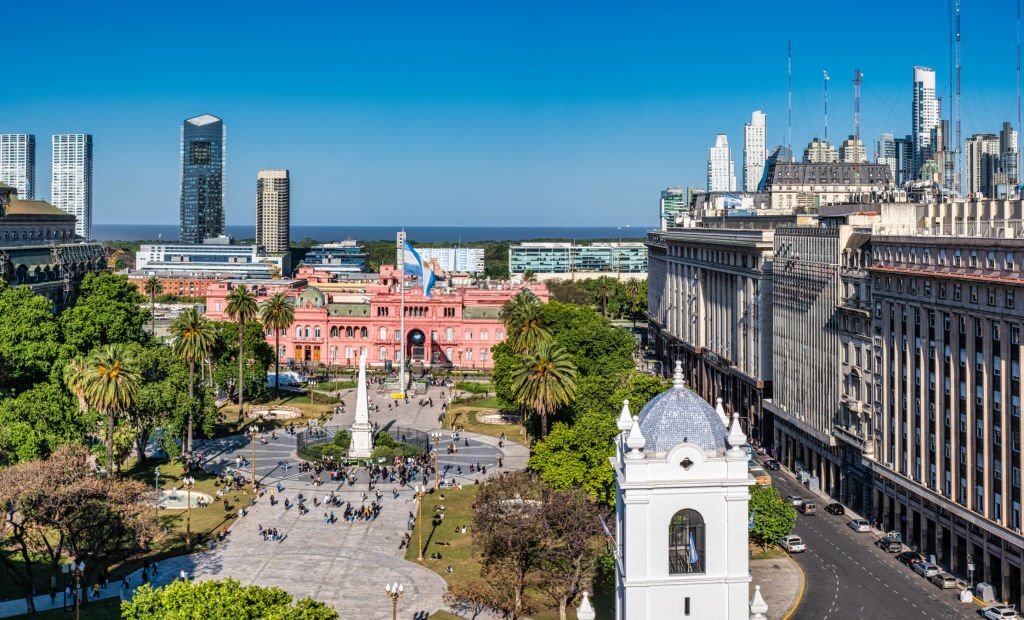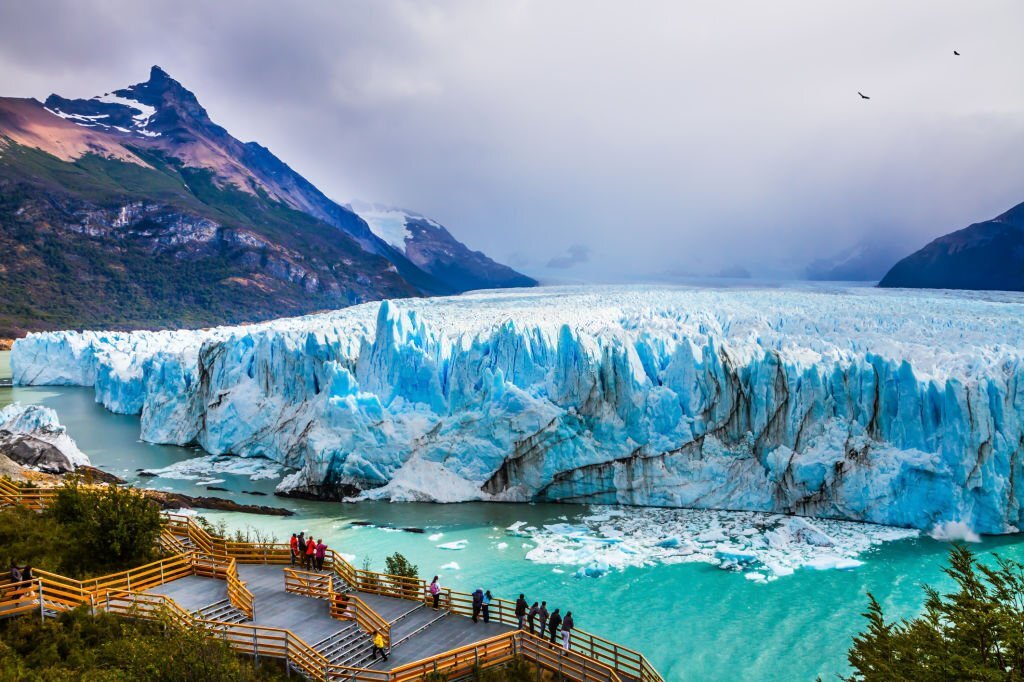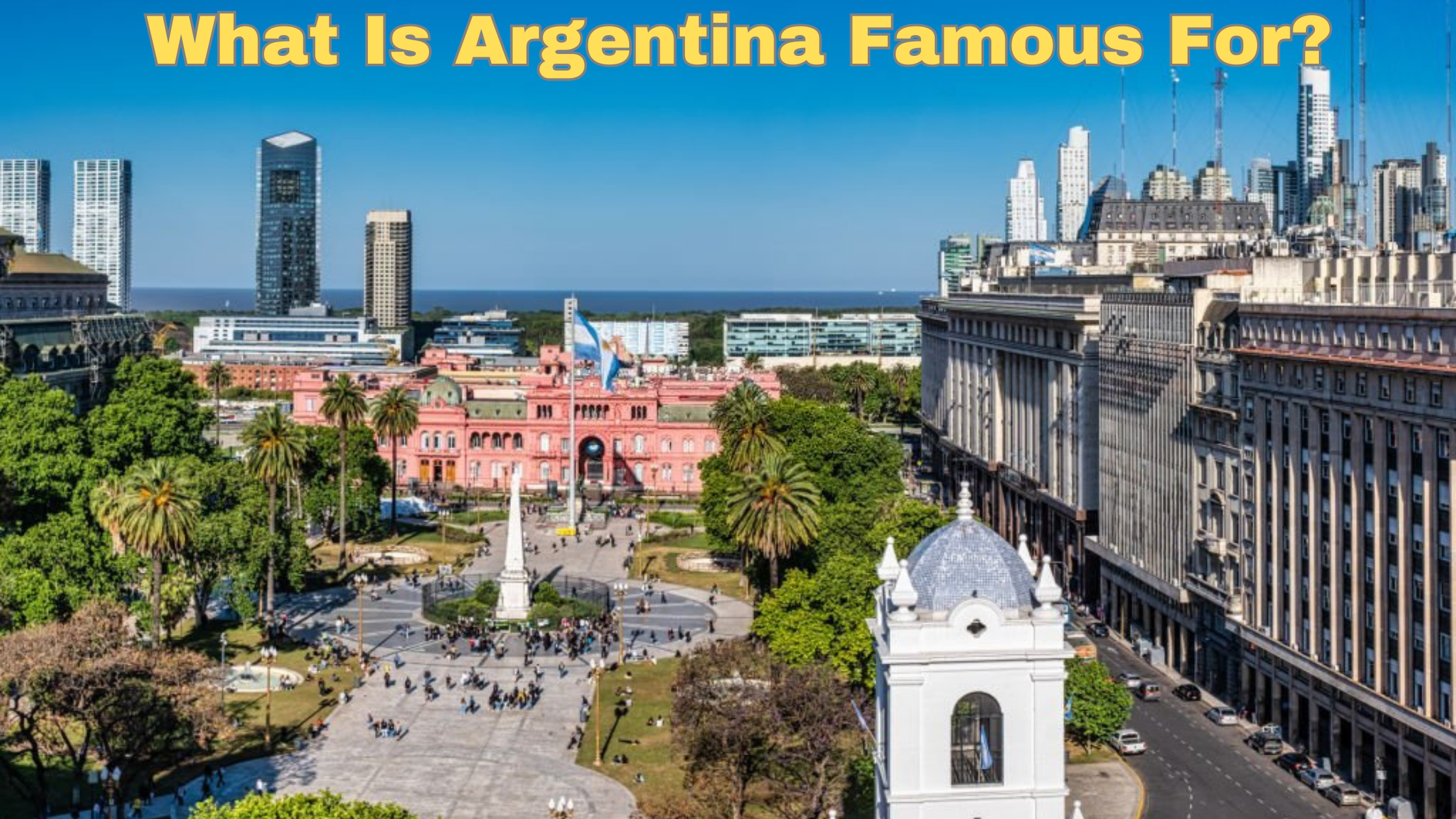
Nestled deep within the South American continent, Argentina stands as a magnetic blend of cultural richness, historical importance, and breathtaking natural beauty. This fascinating country effortlessly marries tradition with modern flair, securing its place as an irresistible hotspot on the global map.
From the mouth-watering complexity of its cuisine to the staggering grandeur of its landscapes, Argentina stitches together an unforgettable mosaic that beckons both wanderers and dreamers. If you’re intrigued by diverse cultures and fascinating landscapes, you’ll find similar allure in Exploring Texas’ fame. Texas, known for its rich cultural heritage and iconic landmarks, offers an equally captivating experience waiting to be discovered.
In the article that follows, we’ll dive headfirst into Argentina’s multifaceted charm, exploring 26 distinct elements that contribute to its one-of-a-kind allure. Whether you’re an adventure junkie or a devotee of culture, this exploration will offer fresh insights into why Argentina is an essential stop on any travel itinerary
Contents
- 1 Asado
- 2 Empanadas
- 3 Alfajores
- 4 Mate Culture
- 5 Fernet and Fernet Cola
- 6 Wine
- 7 History, Culture and Traditions Argentina is Famous for
- 8 Bookstores
- 9 Political Instability
- 10 Sports and Dance Argentina is famous for
- 11 Citites and Travel Destinations Argentina is Famous for
- 12 Evita (Eva Perón)
- 13 Lionel Messi
- 14 Architecture and Landmarks Argentina is Famous for
- 15 Perito Moreno Glacier
- 16 Many more things Argentina is known and famous for
- 17 Conclusion
Asado
Asado is not just a way of cooking meat; it’s a cultural institution. At its core, an Asado is a social event, a gathering of friends and family convened around a grill, or “parrilla.” Originating from the Argentine Pampas, Asado has historical roots in the culinary practices of the indigenous people and was further shaped by the cattle-ranching culture. It’s like the Argentinean version of an American barbecue, but with its unique flair and tradition.
The ritual begins with the lighting of the charcoal. Hardwood charcoals are preferred for a slower, more even burn. Once the coals are glowing red and covered with white ash, they’re spread under the grill. Now, the stage is set.
Choosing the right meats is pivotal when it comes to the Argentine Asado tradition. The grill is adorned with an array of cuts, showcasing a delectable assortment that might feature ribs, sausages such as “chorizo” and “morcilla” (blood sausage), and occasionally even offal. One particularly distinctive cut that frequently graces the grill is the “vacío,” a mouthwatering and tender flank steak.
What sets this culinary experience apart is its straightforward approach to seasoning; typically, a liberal sprinkling of salt is all that’s required—no elaborate marinades or heavy sauces in sight. When you’re in Virginia, you can explore similar culinary delights that showcase the state’s rich heritage. Discover Virginia’s iconic destinations where you can savor these delectable offerings and immerse yourself in the local culture.
The person manning the grill, known as the “Maestro Parrillero,” has a crucial role. The cooking is low and slow, and the Maestro Parrillero must have the patience and skill to manage the coals for even cooking. It’s a role that commands respect and even a bit of reverence.
Empanadas

Empanadas, Argentina’s culinary treasures, are a far cry from conventional fast food. These delectable hand-sized pastries encapsulate a world of flavors within their crisp, flaky crusts, offering a gastronomic adventure with every bite. Picture savoring the savory delights of beef, chicken, cheese, or even fruity fillings concealed beneath that golden exterior. If you’re intrigued by the diverse world of food, explore “Unveiling St. Louis” for more delightful culinary experiences.
In Argentina, the style and filling of empanadas can vary dramatically from one region to another. In the North, you might find “Empanadas Salteñas,” filled with beef, potatoes, and sometimes hard-boiled eggs. The Patagonian version might include lamb. In Buenos Aires, you’ll likely find a simpler version filled with minced beef and onions.
Eaten as a snack or a meal, empanadas are an integral part of Argentine life. They can be baked or fried, but the essence remains the same—a delicious pocket of joy that offers a burst of flavors and textures with every bite. In short, they’re happiness wrapped in dough.
Alfajores
If you’re not familiar with Alfajores, you’re truly missing out on one of Argentina’s most divine culinary delights. These delectable treats comprise two tender and delicate cookies embracing a rich layer of dulce de leche, a caramel-like ambrosia cherished in Argentine culture. For more insights into VA’s key attributes and its connection to Argentine cuisine.
Alfajores are so beloved that they transcend mere snack status. They are given as gifts, served at celebrations, and enjoyed as a decadent treat with a cup of coffee or a glass of milk.
Though the dulce de leche filling is most traditional, Alfajores come in many varieties. Some are covered in a layer of chocolate, others are dusted with powdered sugar, and still others might contain a layer of meringue. They are the epitome of Argentine culinary creativity, reflecting a culture that embraces both tradition and innovation.
Mate Culture

To the uninitiated, Mate (pronounced MAH-teh) may just seem like a type of herbal tea, but in Argentina, it’s much more than that. Made from the dried leaves of the yerba mate plant, this caffeinated beverage serves as a social lubricant, a sign of friendship, and a daily ritual.
Imagine a blend of coffee culture and tea tradition, with an Argentine twist—that’s Mate for you. Just as Mate holds a cherished position in Argentine culture, there are countless reasons to celebrate Maine and its unique offerings in the US.
Sharing Mate is common among friends and family, and the way it’s done is deeply ritualistic. The dried leaves are placed in a hollowed-out gourd and hot water is poured over them. Then, the Mate is drunk through a metal straw called a “bombilla.” The gourd is refilled and passed around the group, deepening the bonds of friendship and family.
In Argentina, Mate is enjoyed at all times of the day and in various settings—from morning gatherings to evening hangouts, from parks to offices. It’s a symbol of Argentine identity, an everyday practice that connects people to their culture and to each other. In a world of digital distractions, Mate is a return to the present moment, a pause to chat, share, and be together.
Fernet and Fernet Cola
Fernet is an aromatic, bitter spirit originally from Italy but has found a second home in Argentina. It’s made from a variety of herbs and spices, which are steeped in grape-distilled spirits and aged in oak barrels. Think of it as the rebellious, edgy cousin of more familiar herbal liqueurs.
In Argentina, Fernet is commonly mixed with cola to create Fernet Cola, a cocktail that has become as Argentine as Asado and Tango. The sweetness of the cola balances the bitterness of Fernet, creating a complex, acquired taste that Argentinians adore.
In social settings, Fernet Cola is often the drink of choice. Its distinct flavor, combined with its high alcohol content, makes it a beverage best enjoyed slowly, in the company of good friends. Whether you’re at a bar in Buenos Aires or at a family gathering in the countryside, you’re likely to find Fernet being enjoyed.
Wine
When it comes to wine, Argentina is a heavyweight. It’s the fifth-largest wine-producing country in the world, and its wines have garnered international acclaim. But what sets Argentine wine apart? For starters, it’s the geography. Nestled against the backdrop of the Andes Mountains, the wine regions offer unique terroirs that give Argentine wines their unique characteristics.
If Argentine wine had a capital, it would be Mendoza. This region alone accounts for nearly two-thirds of the country’s entire wine production. The star of the show is Malbec, a red wine that has become synonymous with Argentine viticulture. But Mendoza also produces superb Cabernet Sauvignons, Chardonnays, and more.
No discussion about Argentine wine would be complete without mentioning its role in Asado. A good Malbec is often the go-to choice for these meaty feasts, its robust flavors complementing the rich, smoky flavors of the grilled meats. This pairing is a culinary high note, one that every visitor to Argentina should experience.
History, Culture and Traditions Argentina is Famous for
Argentina’s captivating history, vibrant culture, and rich tapestry of traditions have contributed to its distinctive identity on the global stage. As we delve into this realm, we uncover five compelling aspects that have left an indelible mark on the nation.
Argentina’s cultural landscape boasts a significant Italian influence that permeates various facets of life. The late 19th and early 20th centuries witnessed a massive influx of Italian immigrants to Argentina, shaping the nation’s language, cuisine, and arts.
The echoes of Italian traditions resonate in the savory aromas of pasta dishes and the rhythmic cadence of the tango—a dance that emerged from the fusion of diverse cultures, including Italian elements.
Argentina’s interior landscapes are steeped in the legacy of the gaucho—a figure emblematic of the nation’s rural heritage. The gaucho, a skilled horseman and nomadic cattle herder, embodies the spirit of independence, resilience, and self-sufficiency.
Bookstores

Argentina’s deep appreciation for literature is beautifully reflected in its numerous bookstores, which are far more than just places to acquire books; they are veritable cultural sanctuaries.
These literary oases, frequently ensconced within historic edifices, surpass their retail functions to evolve into hubs of intellectual discourse and artistic manifestation.
For instance, when exploring VA’s notable features, one cannot overlook the profound impact of these literary sanctuaries in Argentina, which are an integral part of the country’s cultural identity.
Buenos Aires, in particular, boasts an impressive array of bookstores, including the iconic El Ateneo Grand Splendid, which resides within a former theater and exudes an ambiance that beckons readers to lose themselves in the world of words.
Political Instability
Throughout the annals of Argentina’s history, one can discern a compelling tale marked by intermittent bouts of political turbulence and transformation. These episodes have woven a intricate narrative, exerting a profound influence on the nation’s trajectory.
Argentina’s evolution, punctuated by revolutions, military coups, and transitions to democracy, has etched an enduring legacy onto its identity. For more insights into the fascinating aspects of Virginia’s history, you can explore VA’s renowned aspects on the Tales of Travelers website.
While challenging, these experiences have also fueled resilience and an enduring quest for stability, fostering a sense of collective memory that informs the nation’s trajectory.
In navigating Argentina’s history, culture, and traditions, we uncover a tapestry woven from diverse threads—threads that intertwine to create a captivating story of resilience, adaptation, and the enduring pursuit of identity.
These five facets, each unique in its essence, contribute to the symphony of Argentina’s cultural landscape, inviting us to explore, engage, and appreciate the intricacies that define this remarkable nation.
Sports and Dance Argentina is famous for
Argentina’s vibrant spirit finds expression not only in its cultural traditions but also in its passionate pursuits of sports and dance. Within this dynamic realm, two iconic elements stand out, embodying the nation’s fervor and flair.
In the realm of sports, none evokes more passion and unity in Argentina than soccer, known as fútbol. It’s more than a game; it’s a pulse that beats in the hearts of Argentinians across generations.
The country has produced legendary players who have etched their names in history—Diego Maradona and Lionel Messi stand as titans whose talents have captivated the globe.
From the frenzied cheers of fans in the iconic Bombonera stadium to the spirited rivalries between clubs like Boca Juniors and River Plate, soccer is a collective celebration that transcends borders and unites a nation.
Citites and Travel Destinations Argentina is Famous for
Argentina’s allure extends beyond its cultural treasures and culinary delights to encompass a diverse array of cities and travel destinations that beckon adventurers and explorers.
Within this vibrant tapestry, four exceptional locations stand out, each offering a unique blend of natural beauty, urban sophistication, and captivating experiences.
Patagonia, a remote and awe-inspiring region, invites travelers to explore the raw beauty of untamed landscapes. From the towering peaks of the Andes to the breathtaking expanses of glaciers and crystalline lakes, Patagonia is a haven for nature enthusiasts.
Hiking through the majestic Torres del Paine National Park, gazing at the Perito Moreno Glacier, or witnessing the flight of the condors over the rugged terrain are but a few of the adventures that await in this pristine wilderness.
Buenos Aires, the vibrant heart of Argentina, seamlessly marries European elegance with Latin American vibrancy. As the “Paris of South America,” Buenos Aires boasts a captivating blend of neoclassical architecture, bustling boulevards, and an effervescent cultural scene.
From the grandeur of the Teatro Colón to the colorful streets of La Boca, the city offers an array of experiences that celebrate the intersection of history, art, and modernity.
Evita (Eva Perón)
Eva Perón, affectionately known as Evita, left an indelible imprint on Argentine history as a passionate advocate for the marginalized and downtrodden. From her humble beginnings in rural Argentina, she rose to become the beloved First Lady of Argentina alongside her husband, President Juan Perón.
Evita’s commitment to social justice, particularly in championing the rights of women and the working class, cemented her as a transformative figure.
Her legacy endures through her foundation work, her role in establishing women’s suffrage in Argentina, and the enduring symbol she represents for those who aspire to create a more just and equitable society. When considering her impact and the ideals she championed, one can’t help but draw parallels to Idaho’s outdoor adventures, which embody a similar spirit of exploration and the pursuit of a better world.
Lionel Messi
Lionel Messi, often hailed as one of the greatest football prodigies of the modern era, embodies Argentina’s soccer legacy with his unmatched skill and humble demeanor. From his early years in Rosario to his meteoric rise on the global stage, Messi’s exceptional talents have garnered him numerous accolades, including multiple FIFA Ballon d’Or awards.
His ability to gracefully navigate the field, evade defenders, and score stunning goals has solidified his status as a true soccer phenomenon. Yet, beyond his athletic prowess, Messi’s commitment to charitable initiatives and his humble persona resonate deeply with his fans, making him not just a sports hero, but also a role model.
In the tapestry of Argentina’s history and culture, these three figures—Diego Maradona, Evita (Eva Perón), and Lionel Messi—shine as beacons of inspiration, each leaving a legacy that continues to shape the nation’s identity and the world’s perception of Argentina’s boundless talent, resilience, and compassion.
Architecture and Landmarks Argentina is Famous for
Argentina’s architectural wonders and natural landmarks paint a vivid picture of the nation’s diverse beauty and cultural heritage. Within this captivating canvas, four remarkable sites stand out, each offering a glimpse into the country’s rich history, geological marvels, and architectural grandeur.
Iguazu Falls, a UNESCO World Heritage site, is a testament to the awe-inspiring power of nature. Nestled on the border between Argentina and Brazil, this complex of waterfalls astounds with its sheer magnitude and breathtaking beauty.
The roaring cascades, shrouded in mist, create a symphony of water and light that ignites the senses. The Garganta del Diablo (Devil’s Throat) serves as the centerpiece, where water crashes down in a dramatic display that leaves visitors in awe of Earth’s natural splendor.
Perito Moreno Glacier

Patagonia’s Perito Moreno Glacier stands as a testament to the magnificence of the natural world. This dynamic ice mass, part of the Southern Patagonian Ice Field, showcases the captivating cycle of glacial movement and transformation.
Visitors can witness towering ice walls calving into Lake Argentino, creating a spectacle of crashing ice and resonating echoes. This natural wonder in the Gem State’s rich history serves as a reminder of the planet’s ancient history and the forces that shape its landscapes. For more insights into Idaho’s remarkable features and historical significance, explore the “Gem State’s rich history” on Tales of Travelers.
In Argentina’s realm of architecture and landmarks, these four sites—Iguazu Falls, Aconcagua, Recoleta Cemetery, and Perito Moreno Glacier—illuminate the nation’s profound connection to both the natural world and human creativity.
They stand as tributes to the beauty, power, and complexity that define Argentina’s geographic and cultural landscapes, inviting visitors to explore, reflect, and marvel at the wonders of our world.
Many more things Argentina is known and famous for
Argentina’s allure extends beyond our exploration, encompassing vibrant music, dedication to conservation, arts and crafts, cinematic achievements, and countless untold stories. From charming towns to bustling cities, Argentina weaves a rich tapestry of diversity and complexity.
When exploring Oklahoma’s culture, you’ll find it to be just as diverse and captivating. Whether you’re delving into its indigenous heritage, enjoying its vibrant music scene, or savoring local cuisine, Oklahoma has a unique charm. Learn more about Exploring Oklahoma’s culture to discover what makes this state truly special.
Conclusion
Argentina is more than just a country; it’s a melting pot of traditions, flavors, and cultural rituals that define its people. From the communal experience of Asado to the comforting bite of Empanadas, the sweetness of Alfajores, the communal sip of Mate, and the celebratory pour of Fernet Cola and Argentine wine—each of these elements contributes to the rich tapestry that makes Argentina uniquely captivating.
When you take the time to delve into these cultural staples, you don’t just learn what Argentina is famous for; you experience the heartbeat of a nation.
Whether you’re planning a trip to Argentina or simply looking to understand its famous cultural exports, these quintessential aspects provide a lens through which to appreciate the country in all its complexity and beauty. They are invitations to engage with Argentina’s history, its geography, and most importantly, its people.
So the next time you sip a Mate or savor a glass of Mendoza Malbec, remember, you’re partaking in a tradition that has shaped the Argentine identity for generations.

